+ Open data
Open data
- Basic information
Basic information
| Entry | Database: PDB / ID: 7lyv | ||||||
|---|---|---|---|---|---|---|---|
| Title | Crystal structure of the HCMV pentamer-specific antibody 1-103 | ||||||
 Components Components |
| ||||||
 Keywords Keywords | IMMUNE SYSTEM / Fab / HCMV Pentamer / antibody / cytomegalovirus | ||||||
| Function / homology | Immunoglobulins / Immunoglobulin-like / Sandwich / Mainly Beta Function and homology information Function and homology information | ||||||
| Biological species |  Homo sapiens (human) Homo sapiens (human) | ||||||
| Method |  X-RAY DIFFRACTION / X-RAY DIFFRACTION /  SYNCHROTRON / SYNCHROTRON /  MOLECULAR REPLACEMENT / Resolution: 1.9 Å MOLECULAR REPLACEMENT / Resolution: 1.9 Å | ||||||
 Authors Authors | Wrapp, D. / Jones, H.G. / McLellan, J.S. | ||||||
 Citation Citation |  Journal: Sci Adv / Year: 2022 Journal: Sci Adv / Year: 2022Title: Structural basis for HCMV Pentamer recognition by neuropilin 2 and neutralizing antibodies. Authors: Daniel Wrapp / Xiaohua Ye / Zhiqiang Ku / Hang Su / Harrison G Jones / Nianshuang Wang / Akaash K Mishra / Daniel C Freed / Fengsheng Li / Aimin Tang / Leike Li / Dabbu Kumar Jaijyan / Hua ...Authors: Daniel Wrapp / Xiaohua Ye / Zhiqiang Ku / Hang Su / Harrison G Jones / Nianshuang Wang / Akaash K Mishra / Daniel C Freed / Fengsheng Li / Aimin Tang / Leike Li / Dabbu Kumar Jaijyan / Hua Zhu / Dai Wang / Tong-Ming Fu / Ningyan Zhang / Zhiqiang An / Jason S McLellan /  Abstract: Human cytomegalovirus (HCMV) encodes multiple surface glycoprotein complexes to infect a variety of cell types. The HCMV Pentamer, composed of gH, gL, UL128, UL130, and UL131A, enhances entry into ...Human cytomegalovirus (HCMV) encodes multiple surface glycoprotein complexes to infect a variety of cell types. The HCMV Pentamer, composed of gH, gL, UL128, UL130, and UL131A, enhances entry into epithelial, endothelial, and myeloid cells by interacting with the cell surface receptor neuropilin 2 (NRP2). Despite the critical nature of this interaction, the molecular determinants that govern NRP2 recognition remain unclear. Here, we describe the cryo-EM structure of NRP2 bound to Pentamer. The high-affinity interaction between these proteins is calcium dependent and differs from the canonical carboxyl-terminal arginine (CendR) binding that NRP2 typically uses. We also determine the structures of four neutralizing human antibodies bound to the HCMV Pentamer to define susceptible epitopes. Two of these antibodies compete with NRP2 binding, but the two most potent antibodies recognize a previously unidentified epitope that does not overlap the NRP2-binding site. Collectively, these findings provide a structural basis for HCMV tropism and antibody-mediated neutralization. | ||||||
| History |
|
- Structure visualization
Structure visualization
| Structure viewer | Molecule:  Molmil Molmil Jmol/JSmol Jmol/JSmol |
|---|
- Downloads & links
Downloads & links
- Download
Download
| PDBx/mmCIF format |  7lyv.cif.gz 7lyv.cif.gz | 363.3 KB | Display |  PDBx/mmCIF format PDBx/mmCIF format |
|---|---|---|---|---|
| PDB format |  pdb7lyv.ent.gz pdb7lyv.ent.gz | 291.5 KB | Display |  PDB format PDB format |
| PDBx/mmJSON format |  7lyv.json.gz 7lyv.json.gz | Tree view |  PDBx/mmJSON format PDBx/mmJSON format | |
| Others |  Other downloads Other downloads |
-Validation report
| Summary document |  7lyv_validation.pdf.gz 7lyv_validation.pdf.gz | 484.7 KB | Display |  wwPDB validaton report wwPDB validaton report |
|---|---|---|---|---|
| Full document |  7lyv_full_validation.pdf.gz 7lyv_full_validation.pdf.gz | 506.2 KB | Display | |
| Data in XML |  7lyv_validation.xml.gz 7lyv_validation.xml.gz | 80 KB | Display | |
| Data in CIF |  7lyv_validation.cif.gz 7lyv_validation.cif.gz | 115 KB | Display | |
| Arichive directory |  https://data.pdbj.org/pub/pdb/validation_reports/ly/7lyv https://data.pdbj.org/pub/pdb/validation_reports/ly/7lyv ftp://data.pdbj.org/pub/pdb/validation_reports/ly/7lyv ftp://data.pdbj.org/pub/pdb/validation_reports/ly/7lyv | HTTPS FTP |
-Related structure data
| Related structure data | 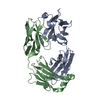 7kbaC 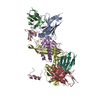 7kbbC 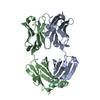 7lywC 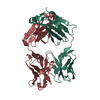 7m1cC 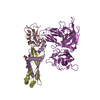 7m22C 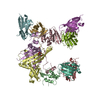 7m30C  2xzcS S: Starting model for refinement C: citing same article ( |
|---|---|
| Similar structure data |
- Links
Links
- Assembly
Assembly
| Deposited unit | 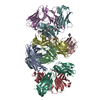
| |||||||||
|---|---|---|---|---|---|---|---|---|---|---|
| 1 | 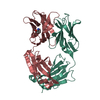
| |||||||||
| 2 | 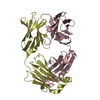
| |||||||||
| 3 | 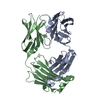
| |||||||||
| 4 | 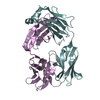
| |||||||||
| Unit cell |
| |||||||||
| Components on special symmetry positions |
|
- Components
Components
| #1: Antibody | Mass: 24662.600 Da / Num. of mol.: 4 Source method: isolated from a genetically manipulated source Source: (gene. exp.)  Homo sapiens (human) / Production host: Homo sapiens (human) / Production host:  Homo sapiens (human) Homo sapiens (human)#2: Antibody | Mass: 22839.244 Da / Num. of mol.: 4 Source method: isolated from a genetically manipulated source Source: (gene. exp.)  Homo sapiens (human) / Production host: Homo sapiens (human) / Production host:  Homo sapiens (human) Homo sapiens (human)#3: Water | ChemComp-HOH / | Has ligand of interest | N | Has protein modification | Y | |
|---|
-Experimental details
-Experiment
| Experiment | Method:  X-RAY DIFFRACTION / Number of used crystals: 1 X-RAY DIFFRACTION / Number of used crystals: 1 |
|---|
- Sample preparation
Sample preparation
| Crystal | Density Matthews: 2.71 Å3/Da / Density % sol: 54.66 % |
|---|---|
| Crystal grow | Temperature: 293.15 K / Method: vapor diffusion, sitting drop Details: 2.1 M sodium formate, 25% PEG 3350, 0.1 M sodium acetate pH 4.5, 0.1 M calcium chloride |
-Data collection
| Diffraction | Mean temperature: 80 K / Serial crystal experiment: N |
|---|---|
| Diffraction source | Source:  SYNCHROTRON / Site: SYNCHROTRON / Site:  APS APS  / Beamline: 19-ID / Wavelength: 0.979 Å / Beamline: 19-ID / Wavelength: 0.979 Å |
| Detector | Type: ADSC QUANTUM 315r / Detector: CCD / Date: Nov 8, 2016 |
| Radiation | Protocol: SINGLE WAVELENGTH / Monochromatic (M) / Laue (L): M / Scattering type: x-ray |
| Radiation wavelength | Wavelength: 0.979 Å / Relative weight: 1 |
| Reflection | Resolution: 1.9→52.62 Å / Num. obs: 143460 / % possible obs: 89.88 % / Redundancy: 2 % / CC1/2: 0.996 / Net I/σ(I): 5.9 |
| Reflection shell | Resolution: 1.9→1.93 Å / Mean I/σ(I) obs: 1.8 / Num. unique obs: 14384 / CC1/2: 0.736 |
- Processing
Processing
| Software |
| ||||||||||||||||||
|---|---|---|---|---|---|---|---|---|---|---|---|---|---|---|---|---|---|---|---|
| Refinement | Method to determine structure:  MOLECULAR REPLACEMENT MOLECULAR REPLACEMENTStarting model: 2XZC Resolution: 1.9→46.83 Å / Cross valid method: FREE R-VALUE
| ||||||||||||||||||
| Displacement parameters | Biso max: 74.22 Å2 / Biso mean: 29.8376 Å2 / Biso min: 9.54 Å2 | ||||||||||||||||||
| Refinement step | Cycle: LAST / Resolution: 1.9→46.83 Å
|
 Movie
Movie Controller
Controller







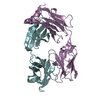
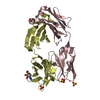

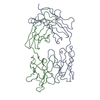
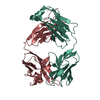
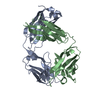
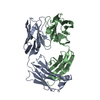
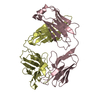
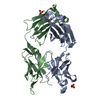
 PDBj
PDBj


